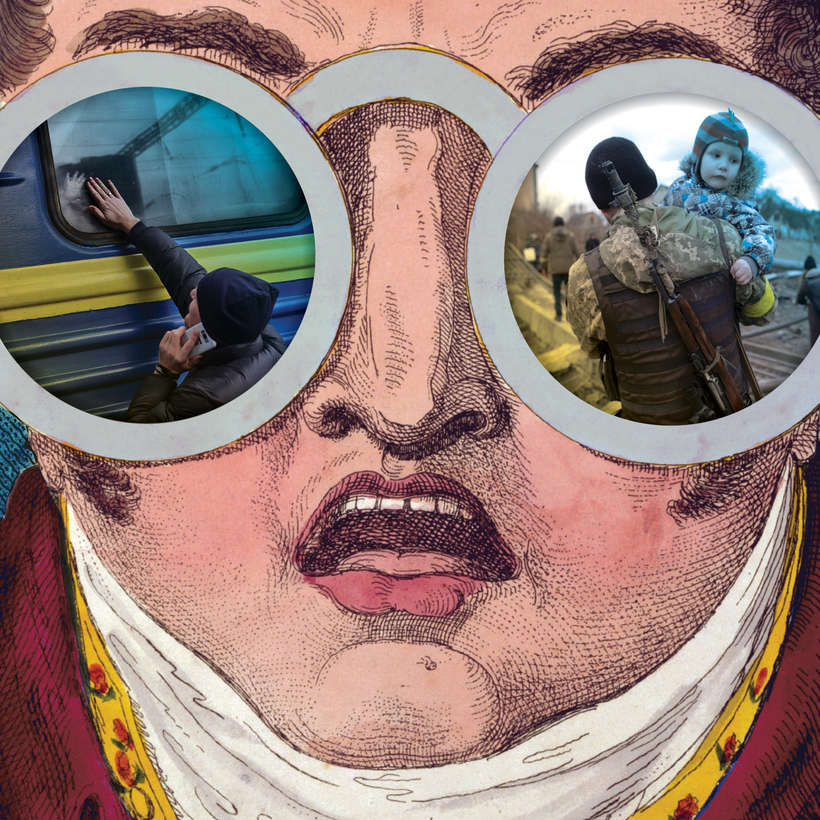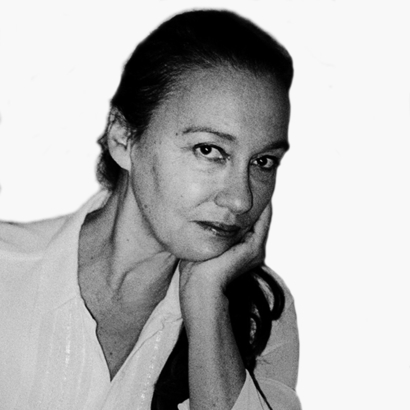He made up his mind while tending to his roses in his backyard in Paris. When French photographer Patrick Chauvel, 72, learned that Russian troops were gathering on the border of Ukraine, he declared, “I’m not going to be gardening while all of this is happening.” Chauvel had an assignment from Paris Match for a feature story in St. Petersburg. During a stopover in the Amsterdam airport, he called his editors to say he was heading for Ukraine instead and instructed a young writer to go fetch his flak jacket from his home.
Chauvel, married five times and a father of five, is a veteran of 34 conflicts and got his start as a war photographer in Vietnam at the age of 19. He is just one of a startling number of combat-seasoned photojournalists who are old enough to collect Social Security and have decided to put retirement on pause to cover the largest mobilization of forces Europe has seen since 1945. Theirs is a bittersweet reunion, and perhaps a valedictory tour of duty for men and women who have been documenting horrifying conflicts around the world for 50 years.

Chauvel’s friend and colleague Alfred Yaghobzadeh, 64, was wounded in Lebanon and Chechnya and taken hostage in Gaza. He arrived in Kyiv a few days after Chauvel without an assignment. Yaghobzadeh’s agent at the time told me he thought Chauvel was in the hospital in Paris for a checkup.
James Nachtwey, the eminent former Time-magazine combat photographer whose career has spanned Northern Ireland, Afghanistan, South Africa, Rwanda, Bosnia, Palestine, Chechnya, and Iraq, and who in his youth was often likened to Robert Capa, is also in Ukraine on his own dime. Nachtwey was working in Afghanistan when the invasion happened and immediately packed up and traveled five days nonstop from Kabul to Kyiv, arriving in time to celebrate his 74th birthday.

In a text, Nachtwey said he went “to express a sense of outrage and a sense of compassion; to hold the perpetrators of these crimes against humanity accountable; to add my contribution to the critical mass of information that will empower change.” (Before Nachtwey boarded the train to Kyiv, he sent a group text message: “Arriving with three bags by train. With no car, I sure could use a lift if anyone is in town and not busy shooting.”)
Combat-seasoned photojournalists who are old enough to collect Social Security and have decided to put retirement on pause to cover the largest mobilization of forces Europe has seen since 1945.
Luc Delahaye, 60, is also there, along with old colleagues such as John Stanmeyer, 58; Laurent Van der Stockt, 58; and David and Peter Turnley, 66, identical-twin photographers. There are plenty of women war correspondents, including American photographer Heidi Levine; ABC News correspondent Martha Raddatz, 69; and Karen Lajon, 63, a reporter for Le Journal du Dimanche, who explained her decision this way: “I may be an old lady now, but this job is my calling. This is the story of my life.”

Many of them paid their own way to Ukraine without an assignment, contract, or any expectation of getting compensated for their work. War photography is more dangerous now than ever. The invasion is less than a month old, and already three journalists have died under Russian fire: the American documentary filmmaker Brent Renaud; a Fox News cameraman, Pierre Zakrzewski, who was an Irish citizen; and a freelance Ukrainian journalist, Oleksandra Kuvshynova.
Yet the business has shrunk drastically. Newspaper budgets have dried up, and magazines such as Time no longer give photojournalists extended contracts. A lot of the work has been replaced by 24-hour news channels, social media, and raw footage recorded on smartphones by civilians. Photographers pay for their own equipment, satellite phones, and, all too often, life insurance.

Old-school camaraderie, however, is still intact. Emeritus journalists weren’t surprised to run into each other when they arrived in Kyiv, older, with graying hair and stiffened joints, but still primed for action. For lifelong war correspondents, the battle for Ukraine is, as Chauvel joked, “just like a nursing home for smokers.”
Ron Haviv, 57, a member of the “Bosnia group,” journalists who bonded covering the siege of Sarajevo 30 years ago, explained: “It sometimes takes us a moment to recognize each other, given the amount of time that has passed, and most of us have some white hair, but the overall feeling is like it always has been: people interested in documenting history, showing the world what is happening, and hoping there is a reaction working together.”

Youth is not always an advantage. A few of the elders expressed concern about the lack of experience of some young reporters who have covered a few demonstrations in Paris during the gilets jaunes protests and now are encountering real combat for the first time. Chauvel said he had to tell a younger colleague “not to wear a helmet in the car near checkpoints so you will not be confused for a soldier.”
For lifelong war correspondents, the battle for Ukraine is, as Chauvel joked, “just like a nursing home for smokers.”
And some arrived in Kyiv with their own sons, who are now photographers, including Frédéric Lafargue, 54, and his son, Raphael, 26, and Yaghobzadeh and his 31-year-old son, Rafael, who was born while his father was covering the first Gulf War.
“For security reasons I am staying in a different hotel,” Yaghobzadeh said. “But I am calling him every day. ”

Even some of the most hardened old hands say they are touched by the scenes of defiance and bravery and what the French photojournalist Eric Bouvet, 60, called “the human dignity of the people.” On International Women’s Day, Bouvet put down his camera for a minute to ferry flowers brought by husbands for their wives on the other side of a checkpoint in Irpin.
Bouvet came close to giving up on photojournalism. He covered Chechnya and the Russian attack on Ukraine in 2014, but like so many others of his ilk, his work has dried up in recent years. He said nobody picks up the phone when he calls to pitch an international-news story, and he often must wait months for a simple “no” to his ideas. He grew so frustrated that he simply stopped calling editors and invested his own money to work by himself. He covered the coronavirus pandemic in French hospitals for two years. While he was able to sell a few photos, it wasn’t enough.

He decided to give up and spend the summer climbing in the French Alps and try some nature photography. But when the crisis broke out in Ukraine, he bought a one-way ticket to Kyiv without hesitation and without asking anyone for an assignment. “I was there in 2014,” he says. “Right now, this is the most important event of the 21st century, and I want to be there to document it.”
Laura Haim, 57, is a New York–based French-American journalist, writer, and film director. She is currently working in Central America


